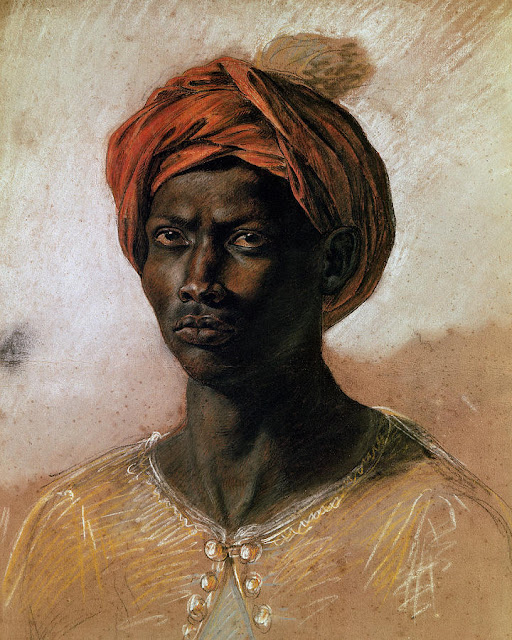Where Are The Blog Posts For Art Appreciation
Ferdinand-Victor-Eugène Delacroix (1798 – 1863) was a famous French painter, draft-person, lithographer, writer, art critic but most of all, he was regarded as the leader of the French Romantic school. His masterpiece Liberty Leading the People, inspired by the French revolution, truly and famously embodied the French Romantic artistic ideals.

(Delacroix, Eugène. Liberty Leading the People. c. 1830. oil on canvas. Louvre Paris, France.)
Delacroix was born in Charenton Saint-Maurice near Paris but he was orphaned at age 16. He became a talented young artist and a huge follower of the Neoclassical painter, Jacques-Louis David. Delacroix received a number of coveted commissions for public buildings early in his career, so he painted them large and used themes that revolved around Greek mythology. This was typical of the current Neoclassical style that was in vogue at that time.

(Delacroix, Eugène. A Girl Seated in the Cemetery c. 1823-1824. oil on canvas. Louvre, Paris, France.)
The Neoclassical painters drew their inspiration from Greek classical art and the Italian Renaissance painters, who valued simplicity and calm grandeur. Delacroix was unique, instead, he was inspired by the brushwork of the famous Peter Paul Rubens and he drew his inspiration from the Venetian Renaissance painters, whose work was sensuous and appealed to the viewer's emotions.

(Delacroix, Eugène. The Death of Sardanapalus. c. 1827. oil on canvas. Louvre, Paris, France.)
Delacroix eventually studied under the famous artist, Théodore Géricault. He even posed as one of the figures in the grand and famous Raft of Medusa masterpiece. After the painting's completion, he was deeply influenced by the effects of its magnitude and he began to use his art to make bold statements that revolved around an emotional response. He even tackled scenes with severe violence. The "man versus nature" theme as well as the use of emotion became typical of the Romantic movement during its height from 1800 - 1840.

(Delacroix, Eugène. Portrait of a Turk in a Turban. c. 1826. pastel on paper. Louvre, Paris, France.)
Géricault'sRaft of Medusa and Delacroix'sLiberty Leading the People are two of the most famous pieces that represent the French Romantic period. The Romantics' intent was to harness the power of imagination and to take the viewer on an escape from their everyday lives. Romanticism was a counter-reaction to the industrial revolution and the past Age of Enlightenment. Delacroix states, "I do not care for reasonable painting at all. My turbulent mind needs agitation, needs to liberate itself. There is in me some black depth that must be appeased."

(Delacroix, Eugène. Arab Horseman Attacked by a Lion. c. 1849. oil on canvas. Art Institute of Chicago, Chicago, IL.)
In 1832, Ambassador Charles de Mornay asked Delacroix to embark on a mission that would smooth over public relations with Morocco's Sultan Moulay Abd al-Rahman and he couldn't refuse. During his adventure, he traveled through Spain, Tangiers, Algiers, and Morocco. He soon began painting architecture and the subjects that he had encountered in North Africa. The ancient, proud and exotic culture moved him to write "I am quite overwhelmed by what I have seen."

(Delacroix, Eugène. Arabs Skirmishing in the Mountains. c. 1863. oil on canvas.
National Gallery of Art, Washington D.C.)
Delacroix's work was characterized by passion and color. He used incredibly expressive brushwork which captures the energy and movement of his subjects rather than utilizing the clarity of the outline or the carefully modeled forms from Neoclassicism. Delacroix became known as the "master of color" for his innovative color techniques and his work eventually inspired the future French Impressionist movement.
If you ever have the chance to see one of Delacroix's original paintings in person be sure to get up close and observe his unique brushwork. It will reveal the artistic genius, which is still revered even by the present art critiques today and his work is much appreciated here!
Enjoy! :)
Where Are The Blog Posts For Art Appreciation
Source: http://theartappreciationblog.blogspot.com/
Posted by: quirogaughtmed.blogspot.com

0 Response to "Where Are The Blog Posts For Art Appreciation"
Post a Comment